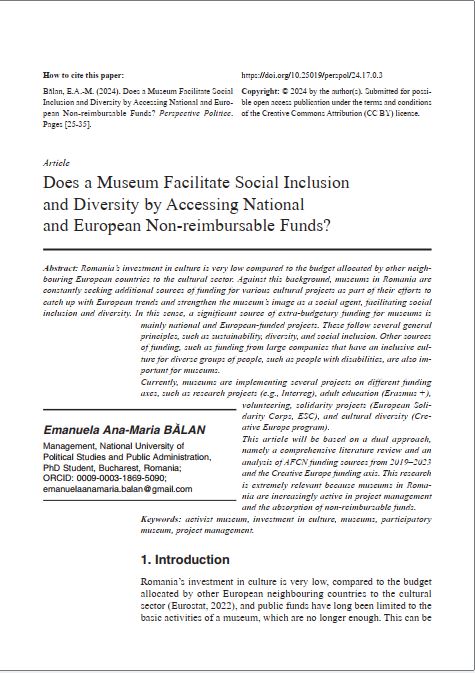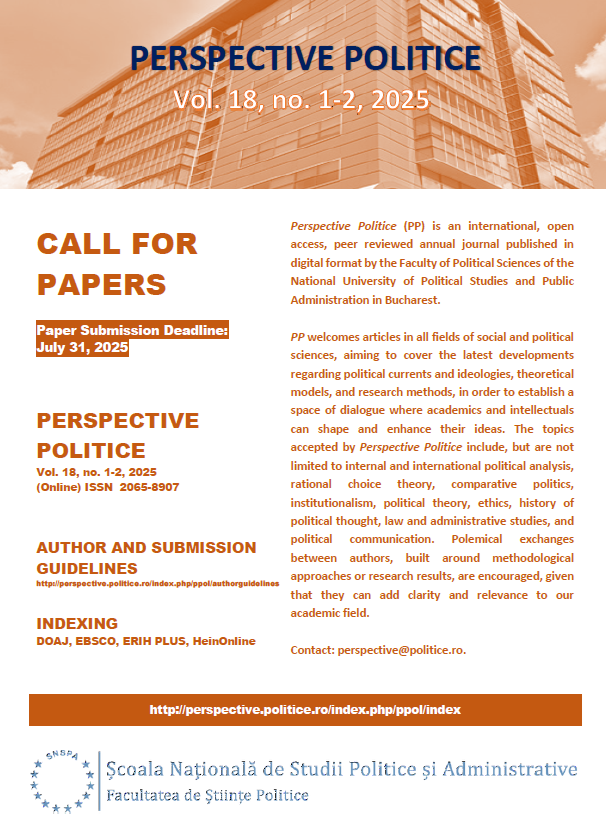Does a Museum Facilitate Social Inclusion and Diversity by Accessing National and European Non-reimbursable Funds?
Abstract
Romania’s investment in culture is very low compared to the budget allocated by other neighbouring European countries to the cultural sector. Against this background, museums in Romania are constantly seeking additional sources of funding for various cultural projects as part of their efforts to catch up with European trends and strengthen the museum’s image as a social agent, facilitating social inclusion and diversity. In this sense, a significant source of extra-budgetary funding for museums is mainly national and European-funded projects. These follow several general principles, such as sustainability, diversity, and social inclusion. Other sources of funding, such as funding from large companies that have an inclusive culture for diverse groups of people, such as people with disabilities, are also important for museums.
Currently, museums are implementing several projects on different funding axes, such as research projects (e.g., Interreg), adult education (Erasmus +), volunteering, solidarity projects (European Solidarity Corps, ESC), and cultural diversity (Creative Europe program).
This article will be based on a dual approach, namely a comprehensive literature review and an analysis of AFCN funding sources from 2019–2023 and the Creative Europe funding axis. This research is extremely relevant because museums in Romania are increasingly active in project management and the absorption of non-reimbursable funds.

Downloads
Published
Issue
Section
License
Copyright (c) 2024 Emanuela Ana-Maria BALAN

This work is licensed under a Creative Commons Attribution-NonCommercial-ShareAlike 4.0 International License.



